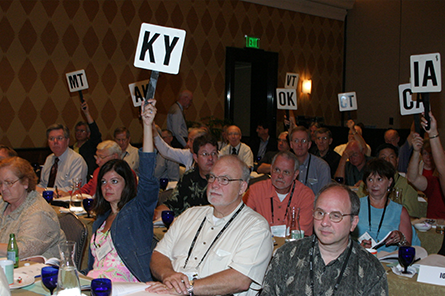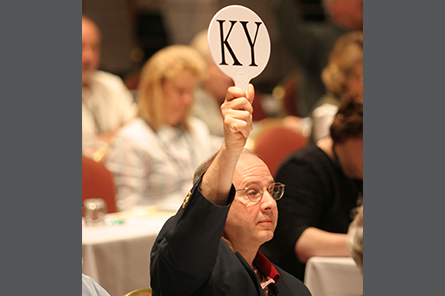Kentucky
Law Passed: 1930 • Joined NCARB: 1931 • Region 4—Mid-Central (1966)
The Components of Licensure
Education
1930: A representative from a Kentucky architecture school is required to be on the board.
1932: Only a high school education is required, though a college degree in architecture is preferred.
1992: A degree from a program accredited by the NAAB is required.
1998: Continuing education is required for license renewal.
Experience
1930: Board includes a “satisfactory experience” clause at its inception, granting licenses to individuals with 10 years of practice.
1987: The IDP is required.
Examination
1931: The first state exam is administered, including two variations: an oral exam called the “Senior Examination” for architects who graduated from an architecture program, and a written exam called the “Junior Examination for those who didn’t.
1965: Kentucky begins offering NCARB’s national examination.
1991: The ARE is required.
Noteworthy
At the time of the board’s founding, there were 169 architects in Kentucky, most of whom were grandfathered into licensure. The board first faced deregulation attempts just four years into its existence.
The board’s first president, Ossian Ward, suggested that NCARB create a national examination in 1932, but his idea was not met with enthusiasm.
Notable People
NCARB President
2006: H. Carleton Godsey, FAIA (Louisville)
Additional Member of the NCARB Board of Directors
1966-68, 1970-71: Charles P. Graves, FAIA (Lexington)
First Chairman/President
Ossian P. Ward, FAIA
First Board Members
Clarence Julian Oberwarth, FAIA
Bernard Wisenall
Howard Churchill
F. Paul Anderson
First License Issued
Clarence Julian Oberwarth, FAIA (Frankfort)
First Woman Licensed
1938: Louise Leland
NCARB President Medalist
1995: L. Wayne Tune (Lexington)


